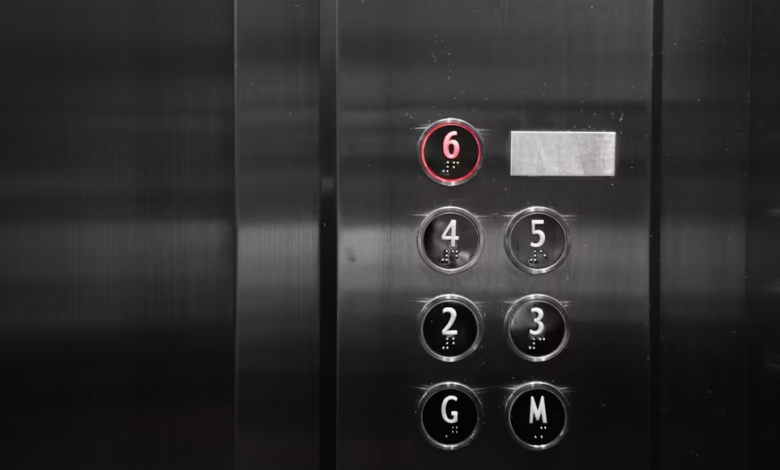Choosing Between Basic and Comprehensive Lift Service Contracts: A Complete Guide

Both basic and comprehensive lift service contracts are helpful for the upkeep of elevators. However, they have significant differences between them. Discover the same in our post.
Elevators help us in many ways in our daily lives. They help us reach our homes or offices easily and keep the strain associated with climbing the stairs at bay. They also help in transporting goods and differently abled people.
Apart from that, elevators or lifts play an important role in enhancing the aesthetics of the building as well. So naturally, when elevators break down, they can lead to a lot of issues. For instance, about 4334 lift faults were recorded in train stations in Great Britain. That’s why you need to hire an elevator maintenance company for their upkeep. You have to sign a contract with them, based on which they will carry out regular maintenance checks and repairs.
There are two types of such contracts you can sign, namely, basic and comprehensive contracts. Let’s understand the difference between these contracts below.
What Is a Basic Lift Service Contract?
Basic lift service contracts refer to annual maintenance contracts that include routine inspections and lubrication.
Routine Inspections
Routine inspections refer to periodic inspections of basic functions, such as checking the lift’s button responsiveness, inspecting door mechanisms, and emergency communication systems.
They also include checking the elevator door’s hatches and locks, shaft light, and interior illumination. These inspections are performed as per the respective LOLER and PUWER regulations and by regulation-compliant personnel.
Button responsiveness refers to whether the lift’s call buttons or the floor buttons respond to the person’s touch. For instance, the maintenance professionals check whether the lift goes up to a particular floor or comes when called.
Door mechanisms refer to whether the doors open or close smoothly or not. On the other hand, a door’s hatches and locks refer to the following, respectively:
- Vent-like installation on the elevator ceiling
- Locking mechanism that ensures the lift doors close completely
Emergency communication systems refer to the telephones or auto-diallers. Auto diallers are devices that call pre-programmed emergency service numbers to spare passengers the same hassle.
Checking the elevator shaft light involves using a light meter to check for the illumination inside the elevator shaft. The elevator maintenance company professionals also check the lighting inside the lift.
Lubrication
During the inspection, the maintenance professionals also lubricate the parts of the lift, like hinges, pulleys, and bearings. These parts play an important role in helping the lift function and move, as seen below:
|
Lift Part |
Role It Plays |
| Hinges | Help in the opening and closing of the lift doors. |
| Pulleys | Provide the required force that helps the lift move and helps them move vertically. |
| Bearings | Ensure longevity of the lift parts by reducing friction between lift parts, and ensure smooth movement as well. |
Table 1: Function of Lift Hinges, Bearings, and Pulleys
By lubricating these vital parts, the maintenance professionals ensure that the lift keeps moving smoothly without any jerky movements.
Basic elevator contracts do not generally include emergency call-outs, breakdown repairs, and major parts replacements.
Due to the limited nature of these lift service contracts, they are ideal for newer lifts or buildings with low traffic.
What Is a Comprehensive Lift Service Contract?
Comprehensive elevator maintenance contracts include everything. Let’s understand what this means in detail.
These contracts include routine inspections, emergency call-outs, major parts replacement coverage, lubrication, and repairs.
As with basic contracts, these inspections, repairs, or replacements are carried out in accordance with LOLER and PUWER regulations.
Let’s now explore the inclusions of a comprehensive elevator service contract offered by an elevator maintenance company below.
Routine Inspections, Lubrication, and Repairs
Routine inspections in comprehensive elevator maintenance contracts involve control panel, door mechanism, mechanical components, and braking systems inspections. They also involve lubrication and repairs wherever applicable.
Control panels refer to the brain responsible for running the elevator. It consists of the operating system, task scheduling, and input-output and communication programs, to name a few inclusions.
Door mechanisms refer to the opening and closing of doors, the functioning of their hinges, and their interlocking. These mechanisms are vital to ensure passenger safety. For instance, most or all elevators have landing and cab doors.
What people see every day is the landing doors. These doors prevent people from falling into shafts. The cab doors open only when the elevator has reached the floor.
Mechanical components refer to the counterweights, brakes, and hydraulic systems, to name a few. The counterweights help balance the elevator’s weight, making it easy for it to move.
Brakes help the elevator stop at the correct floor and hold it steady. Hydraulic systems help the elevator cab itself move up and down vertically.
Lubrication and cleaning refer to using oil or grease to keep ball bearings and similar components smooth and reduce friction. These components are vital in helping an elevator move normally, as explained in the preceding sections.
In case the maintenance company officials find that some elevator parts need repairs, they perform the necessary repairs during their inspection. You will not find this feature in a basic lift service contract.
Emergency Call-Outs
Emergency call-outs refer to contractual requirements that mandate the immediate response of maintenance companies to emergencies. This part of the contract means that the lift maintenance company is available on call 24/7.
It also states that the company must rescue the passengers trapped in the lift.
Parts Coverage
Certain companies also include the cost of the new parts involved in a lift emergency in their contracts. So, you won’t have to pay separately for the lift parts during the repair process, if at all.
The intensive nature of these contracts means that they are suitable for older lifts, high-traffic commercial buildings like hospitals, and hotels, for example.
What Are the Differences Between a Basic and a Comprehensive Elevator Maintenance Contract?
Consider the table below for more information on the same:
|
Feature |
Basic Service Contract |
Comprehensive Service Contract |
| Routine Inspections | Included | Included |
| Lubrication & Adjustments | Included | Included |
| Minor Repairs | Limited / Excluded | Covered |
| Parts Replacement | Not included | Included |
| Emergency Call-Outs | Extra cost | Usually included |
| Breakdown Coverage | Not covered | Covered |
| Priority Response | Not guaranteed | Typically guaranteed |
| Typically guaranteed | Not included | Often available |
| Cost | Lower upfront | Higher upfront, but predictable |
| Best Suited For | Newer lifts, low-traffic residential buildings | Older lifts, high-traffic commercial buildings like hospitals, hotels |
Table 2: Side-by-side comparison of Basic Vs Comprehensive Lift Service Contract
In Conclusion
Both basic and comprehensive elevator maintenance company contracts will help you maintain your lift. However, you should consider aspects like their inclusions before you make up your mind. Only then will you be able to make an informed decision between basic and comprehensive lift services contract.
Can’t Decide on Which Lift Contract to Choose?
Get in touch with a reputed elevator servicing company near you in the UK today to discuss the inclusions and refer to the comparison table in the preceding section as well for a better idea.



